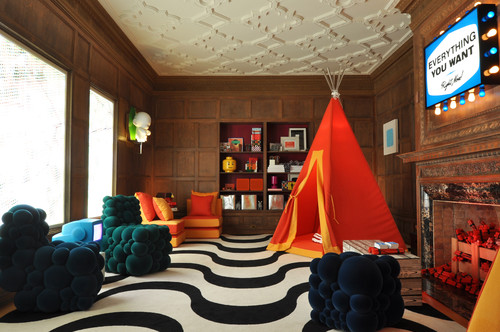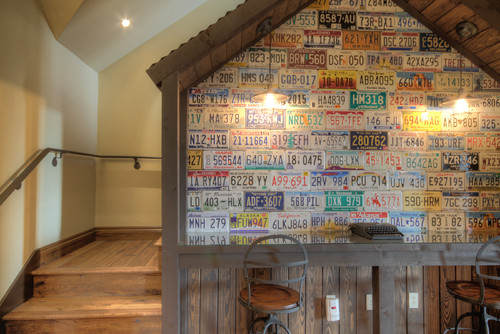Many people spend a lot of time decorating their homes only to end up with a boring result that is not very inspiring.
Their home looks nice, but it is just not interesting.
It feels like it is missing something.
Here are several interior designer tips & tricks for creating an interesting interior design that is design magazine worthy.
 photo courtesy of Bill Wilson flickr.com/photos/okchomeseller/30628969801/
photo courtesy of Bill Wilson flickr.com/photos/okchomeseller/30628969801/
Design Style
When decorating a home, many people make a mistake of starting with a color scheme.
Interior designers know that the color scheme must come after selecting a design style.
A room without style is definitely not interesting.
For help in determining a design style for your home, see the article What is Your Design Style?
Popular and Prevalent Mass Produced Items
Homes that are filled with popular and prevalent mass produced items tend to be boring, primarily because we have seen it all before, but also because much of it tends to be of lesser quality.
Yes, we all have mass produced items in our homes, but we should not continually purchase the ones that are the most popular and prevalent.
Avoid purchasing every item of your home's furniture and decor at decorating chain stores in your neighborhood, larger super stores that you visit once a week, or companies who mail a very popular catalog. Feel free to purchase a few items from these stores, but not everything in your entire home.
An interior designer trick to finding truly unique items is to look at flea markets, antique stores, garage sales, and larger online stores such as Amazon #ad that offer many more options than any brick and mortar store ever could (plus they often have much lower prices). Antique and vintage items purchased second hand can be painted or reupholstered in the color of your choice to be 100% unique and interesting.
Contrast
Most people know how to select a color scheme, however their color scheme is often lacking contrast. Contrast is basically the difference between the lightest and darkest element in the room. Many rooms are filled with beige and do not have much white and almost no black, making the room feel very boring and dull.
An interior designer tip to finding the correct contrast in a room is to take a black and white photo of the room. The photo should have about 50-80% gray, 10-25% black, and 10-25% white.
Texture
Rooms without texture can feel very sterile, so make sure to add textural items to every room to make them feel cozy and welcoming.
This is especially true in most contemporary and modern interiors that have solid colored fabrics instead of textural patterns.
Interior designers often add many of the same types of textural items to their designs to make the room more interesting. These items include soft curtains, rough wicker baskets, shiny mirrors, fluffy rugs, rough brick, a collection of tattered hardback books, pillows with an accentuated texture, curvy flowers, drippy candles, tufted furniture, and distressed wood.
Architecture
A room's architecture, or lack thereof, can make it boring.
Most new home builders add the bare minimum to the architecture to make the home as affordable as possible.
Interior designers know that the architecture of a home sets the stage for the interior design of the room. A good design will never be great without good architecture.
If your home is very plain without architectural interest, consider adding crown molding, window trim, wood or stone flooring instead of carpet, a fun doorbell, framed bathroom mirrors, unique cabinet hardware, and interesting light fixtures.
Opt for natural materials (such as real wood and real granite) over man made materials (such as laminate flooring or cultured marble countertops) for a more timeless look.
Lighting
Basic lighting in a room makes the room look basic, not interesting.
The general basic lighting in a room, typically in the center of the ceiling, is called ambient lighting. Try incorporating additional types of lighing in your interior design to make it more interesting.
Lighting focused on an area of activity is called task lighting. This includes a desk lamp, under cabinet lights in a kitchen, and vanity lighting in a bathroom.
Accent lighting is used to draw attention to certain items in a room, such as a light direct towards art or plants.
Decorative lighting is lighting where the light fixture is beautiful, such as a crystal chandelier or a decorative wall sconce.
By incorporating multiple lighting sources in every room, you can better adjust the light level to your desired activity and give your room more dimension with different lighting in different areas.





